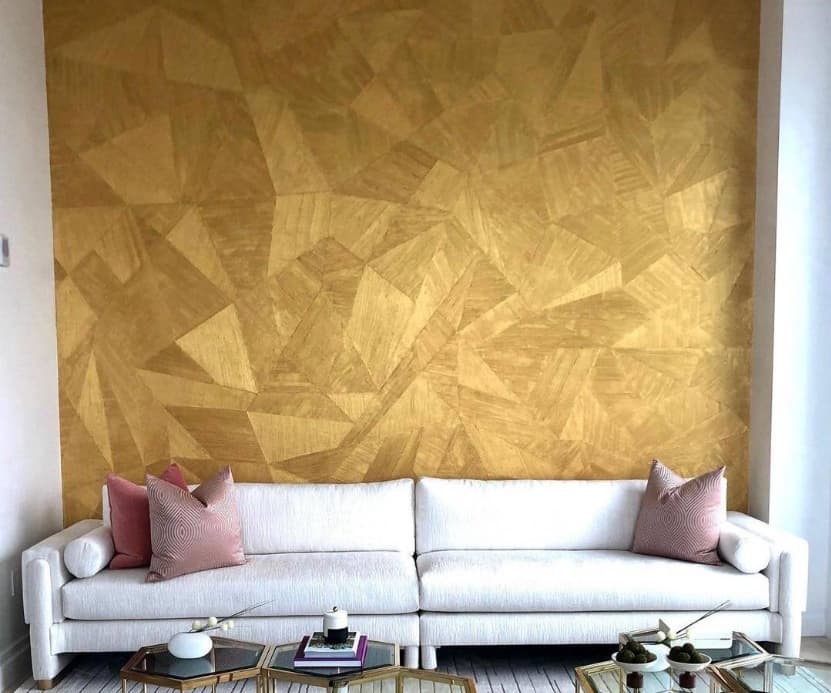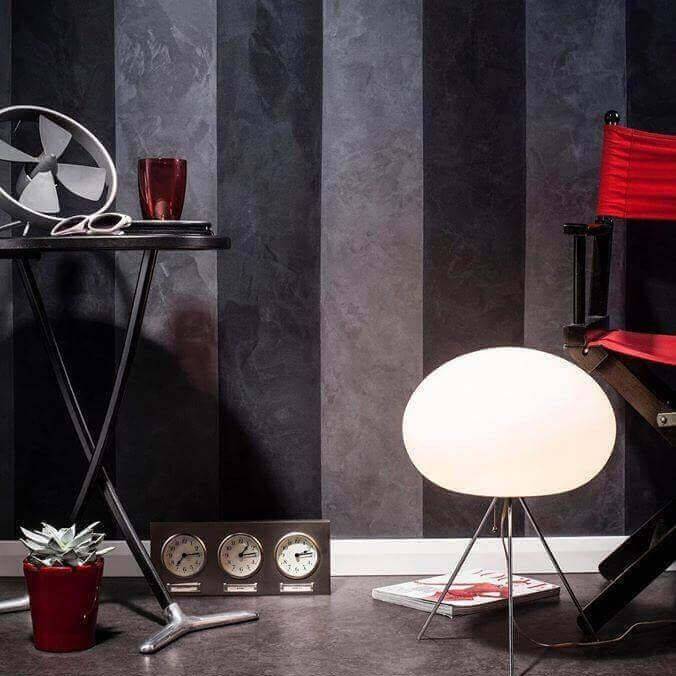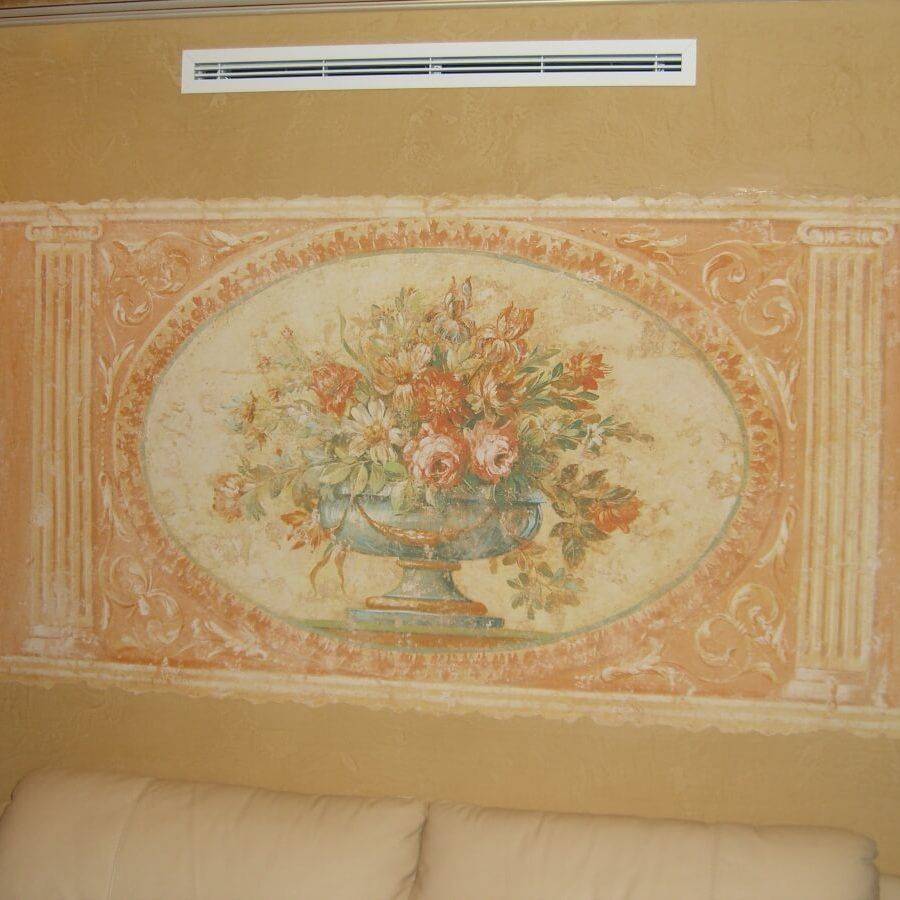If you want to spice up your life by ringing the changes, a coat of paint on the walls can be as dramatic as a new haircut and a spot of extravagant retail therapy after a devastating breakup. But don’t stop there. Why go back to the basics when, with all the different types of decorative paint finishes available, you could go to town and make a statement?
Paint is capable of much more than just providing a standard finish. So many techniques have evolved over the centuries and can be used indoors and outdoors. But paint types differ, so it pays to be circumspect about which type of paint you decide to use to create the effects you’re after.
It’s also important to understand or get professional advice on what paint to use to achieve the technique you want to create. A gloss enamel will not achieve the same finish as water-based paint.
In this article, we’ll look at types of decorative paint and some of the techniques you can use with specific types of paint to achieve the exquisite finishes you desire.
How to Use Decorative Paints to Create Decorative Delight
Decorative paint finishes are classified according to luster. The amount of gloss or shine reflects onto walls. So to brighten a dim room, it’s often a good idea to pick a glossier paint finish… but not if the wall isn’t smooth.
Decorative paint finishes can include:
- Matte paint has hardly any shine and will need a few coats to hide imperfections, but it does give good coverage. Matte paint is good for ceilings and areas with little activity or traffic since it is easily damaged.
- Eggshell is a popular finish with a longer lifespan than matte paint and a more satiny finish than matte paints. Eggshell paints are recommended for use in places with low or medium traffic, like living rooms and bedrooms.
- Satin finish yields a more velvety sheen and is suitable for high-traffic areas like bathrooms, playrooms, and kitchens.
- Semi-gloss is reflective and shiny. It is hard-wearing and mildew-resistant, but since it has a glossy look, it shows more damage than other paint types.
- High Gloss paint is shiny, washable, and very hardy, so it is handy for cabinetry, doors, and outdoors on shutters. It results in a shiny finish and is washable and durable. It can withstand daily scrubbing, making it fit for doors and cabinetry.
- Glazes are thin, transparent, or semi-transparent layers of paint that allow the layer underneath to show through.

If you’re looking for a more unconventional finish, consider these decorative paint products:
Finding a Decorative Wall Painting Technique That Suits You
Marble, stone, and leather finish all lend gravitas and a touch of elegance, particularly if used on an arresting feature wall, as the focal point to a room, or in wall panels, perhaps surrounded by molding.
In addition to glitter walls, sponging, ragging, rust effects, and other faux finishes discussed in the previous blog on decorative paints, decorative stencils, and embossed rollers are also being used to deliver beautiful wallpaper-like effects without the fuss of installation or eventually having to remove wallpaper.
Stencils
Using stencils, you can have just the odd outline placed here and there in strategic spots or repeat the pattern to give a wallpaper-like effect.

Crackle Finish
Crackle finishes are a creative way to add an old-world feel that suits an older home. Starting with a clean, dry wall, you need to pick two strongly contrasting shades of latex paint – they should be at least four shades away from one another.
The first color on the wall is the one that will show through, so if you want dark cracks on a light surface, use the dark color first and give the wall two coats of this. (Allow for drying time between coats.)
Brush on an even coat of acrylic crackle medium in one direction only. The thicker the coat, the more pronounced the cracks will be, so if you want more subtle crackling, the layer should be quite thin.
Once this is dry (working in the same stroke direction as used for the crackle medium,) apply an even and fairly thick coat of the top layer, as you should only go over the crackle medium once.
Then watch the magic happen as the cracks start to appear. Apply two coats of acrylic varnish to protect the finish, particularly if it is a high-traffic area like a passage.
Color Blocking
Color blocking is a fascinating way to add interest to a child’s bedroom. It doesn’t require much skill- plenty of low-tack painter’s tape is the main requirement. You can use any shapes you like for this effect, from tidy blocks to neat stripes. (These designs work best if your walls are square, which is not always the case.)
Remember to stand back and check whether the lines you’ve taped are straight, then use a clean base, paint your design in a restrained two-color satin paint scheme, or push the envelope with more colors if you like.
Ombré
An ombré effect is not just the cool hair salon gradient of color we all picture on hearing the word, but it can be recreated with satin paint on any wall. Find three or four graduating shades of the same paint color (or add white to the first shade to lighten until you achieve the shades you want.)
Many people struggle with blending, but you don’t have to blend the colors at the joins. Just measure the wall and divide it into the number of shades you plan to paint, tape off each section, and carefully paint along the line for a nifty “paint swatch” vibe.
Trompe L’oeil
Trompe L’oeil brings to mind Tuscan scenes and may seem dated, but if done properly, this illusionary decorative paint effect is exquisite, and there is no limit to the landscapes that can be created in your home.
Television gardening shows sometimes create “windows” in sheltered spots on garden walls that extend the view beyond the immediate, creating a mythical 3-D vista with depth. They often use a shaped (sometimes arched) board that can be more easily painted when placed on an easel and then screwed onto the wall, possibly with a window frame over it or shutters alongside, for instance, to create the impression of looking through a window.
It will take some artistry to pull off the skill of the Greek Parrhasius, who won a paint-off against Zeuxis back in the day after the latter tried to pull back the curtains on his rival’s painting, only to find that the curtains were the actual artwork! Back then, pigments would have been added to wet plaster to create an impression of grandeur.
Today, various colors of acrylic or matte interior paint allow for plenty of experimentation. A primer is necessary when painting a scene on your walls; a light background usually works best for this technique.
You can softly sketch your design freehand (in which case, a pencil line grid is often helpful for proportion) or use a projector. Shadows and lighting create a more realistic image – outline features in the foreground with darker colors to help differentiate and create more depth. Once the mural is complete, let it dry and use a clear polyurethane to seal it.

Strié
Strié is a negative glaze technique involving the application of a 5:1 glaze/latex paint ratio (using a roller) over a contrasting wall color. This ensures the slow drying of the paint so you can softly drag your brush/paint comb vertically down the wet glaze to create brush lines on small sections before the glaze has a chance to dry.
A linen/basket weave effect is created if you drag the brush vertically and horizontally over the glaze, with each section slightly overlapping.
Wood Grain (Faux Bois)
Wood grain (Faux bois), meanwhile, gives the sort of earthy appeal that grounds a home, and it doesn’t have to be in shades of boring brown either. The look is adaptable and suits anything from a kitchen or bathroom to a dining room or even a child’s nursery.
After creating a strié finish as described above, but without any effort to keep the lines uniformly straight—they aren’t straight in real wood—use a wood-graining rocker at the top edge of the surface and drag the rocker down vertically, rocking the curved head from top to bottom through the wet glaze, and repeat.
To change the direction of the grain, flip the rocker so that the other end is at the top. Once you’ve cleaned the glaze off the rocker, repeat the process. If you make a mess, simply wipe it off and reglaze, then apply strié and rocker as explained. Before starting, practicing this technique on a board is a good idea.
Dry Brushing
Dry brushing is an excellent way to apply less paint over a clean, dry contrasting surface. Dip only the very tips of your brush into matte latex paint and apply the paint by gently dragging the bristles over the surface. You can also use a stabbing, scrubbing motion to work the paint onto the surface.
This technique can be layered, e.g., by using three different colors, and is especially useful when painting statues or window frames for a rustic appearance with dimension. The dry paint job can be sealed with a top coat like Meoded’s Hydrowax when it is dry.
Geometric Reflections
Geometric shapes can be painted using a metallic glaze over hardy satin base color and repeated to form a pattern, or you can use different metallic glazes and create a wall full of light-reflecting shapes, such as rectangles in different sizes.
Tape off the rectangles on a clean, dry surface using low-tack painter’s tape, then using metallic glaze and a cloth, rub or rag the glaze into each rectangle. You can use different metallic colors for each bloc to produce bronze, silver, and gold-shaded and nuanced blocs.
Once these have dried, tape more rectangles overlapping at right angles to the rectangles, you’ve already created. The reflected light creates a warm glow, perfect for a warm living space.
Find the Ideal Decorative Paint Finish for an Exceptional Home
Are you on a quest to find something absolutely unique and opulent to embellish the inside of your home? Consider our range of decorative paints at Meoded Paint & Plaster.
Whatever mood or vibe you’re going for, we can assist you in creating the look you want. If you want a first-hand look at how to use and apply any of our decorative paint products, check out our Instagram page. You can also head over to our Youtube channel for handy how-to tips and tricks.
